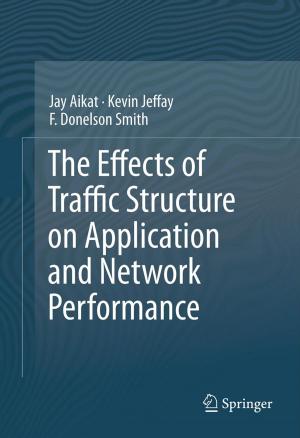Hydrological Changes and Estuarine Dynamics
Nonfiction, Science & Nature, Science, Biological Sciences, Ecology, Earth Sciences| Author: | Paul Montagna, Terence A. Palmer, Jennifer Beseres Pollack | ISBN: | 9781461458333 |
| Publisher: | Springer New York | Publication: | October 31, 2012 |
| Imprint: | Springer | Language: | English |
| Author: | Paul Montagna, Terence A. Palmer, Jennifer Beseres Pollack |
| ISBN: | 9781461458333 |
| Publisher: | Springer New York |
| Publication: | October 31, 2012 |
| Imprint: | Springer |
| Language: | English |
Water development projects have altered the environmental flow landscapes where dams and diversions have been built, and this could have effects on coastal resources, particularly in estuaries. Water is an important human resource and water needs grow as populations grow. However, freshwater inflow to the coast is fundamental to the functioning of estuaries. Can we have stable, secure, and sufficient water resources for people and still protect estuarine health? Estuaries are the most productive environments on Earth, and this is in part due to freshwater inflow, which dilutes marine water, and transports nutrients and sediments to the coast. Estuaries are characterized by salinity and nutrient gradients, which are important in regulating many biological processes. As water is diverted for human consumption, it is common for many environmental problems to appear. While many countries have water quality programs, few are dealing with water quantity alterations. The first step is to define marine resources to protect, and the water quality conditions those resources need to thrive. The second step is to determine the flow regimes needed to maintain the desired water quality conditions. Finally, many regions are using adaptive management programs to manage freshwater resources. These programs set goals to protect ecosystem resources, identify indicators, and monitor the indicators over time to ensure that the goals are appropriate and resources are protected. Case studies demonstrate that monitoring and research can determine the ecological and socio-economical impacts of altered freshwater inflows, and stakeholders and managers can make well-informed decisions to manage freshwater inflows to local coasts wisely.
Water development projects have altered the environmental flow landscapes where dams and diversions have been built, and this could have effects on coastal resources, particularly in estuaries. Water is an important human resource and water needs grow as populations grow. However, freshwater inflow to the coast is fundamental to the functioning of estuaries. Can we have stable, secure, and sufficient water resources for people and still protect estuarine health? Estuaries are the most productive environments on Earth, and this is in part due to freshwater inflow, which dilutes marine water, and transports nutrients and sediments to the coast. Estuaries are characterized by salinity and nutrient gradients, which are important in regulating many biological processes. As water is diverted for human consumption, it is common for many environmental problems to appear. While many countries have water quality programs, few are dealing with water quantity alterations. The first step is to define marine resources to protect, and the water quality conditions those resources need to thrive. The second step is to determine the flow regimes needed to maintain the desired water quality conditions. Finally, many regions are using adaptive management programs to manage freshwater resources. These programs set goals to protect ecosystem resources, identify indicators, and monitor the indicators over time to ensure that the goals are appropriate and resources are protected. Case studies demonstrate that monitoring and research can determine the ecological and socio-economical impacts of altered freshwater inflows, and stakeholders and managers can make well-informed decisions to manage freshwater inflows to local coasts wisely.















